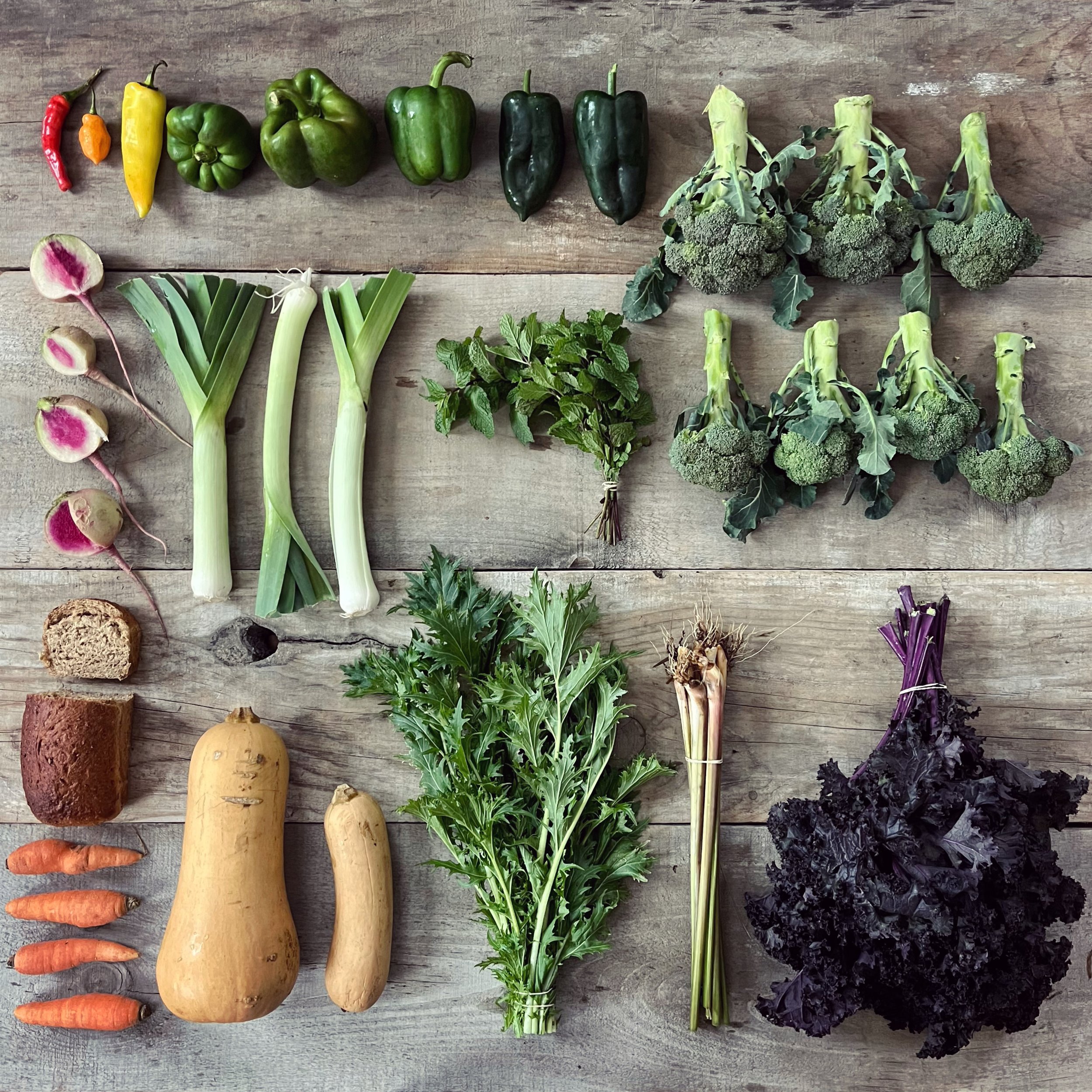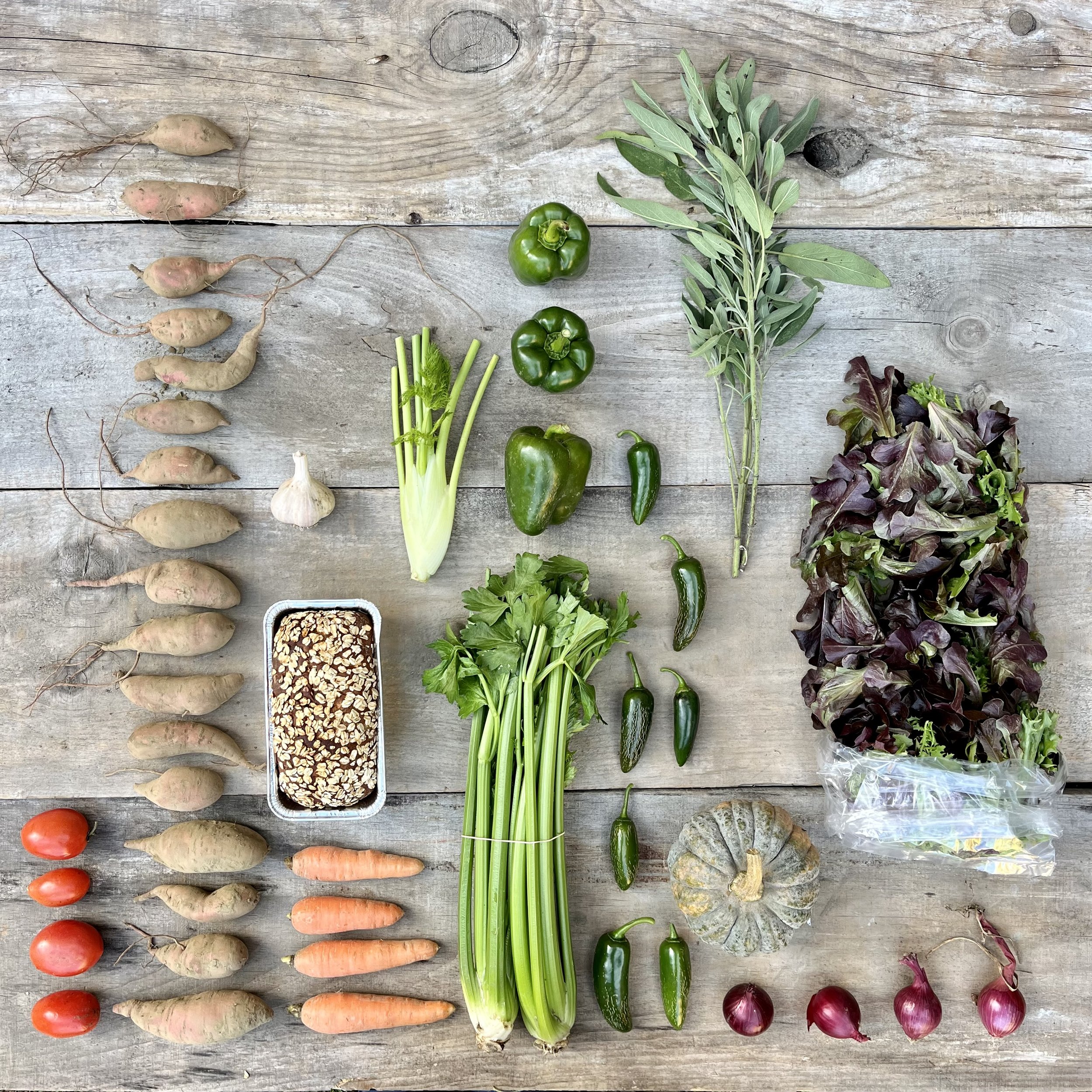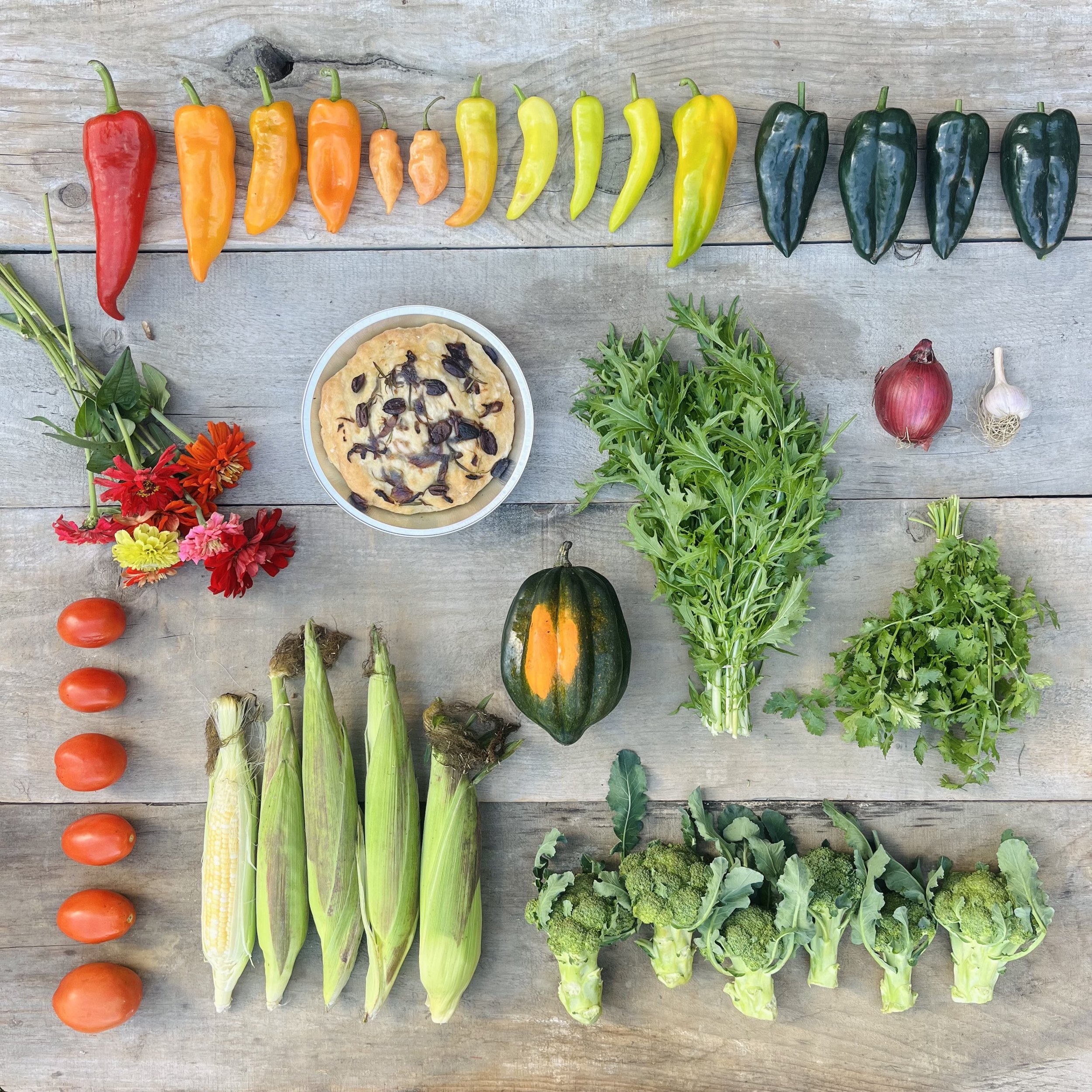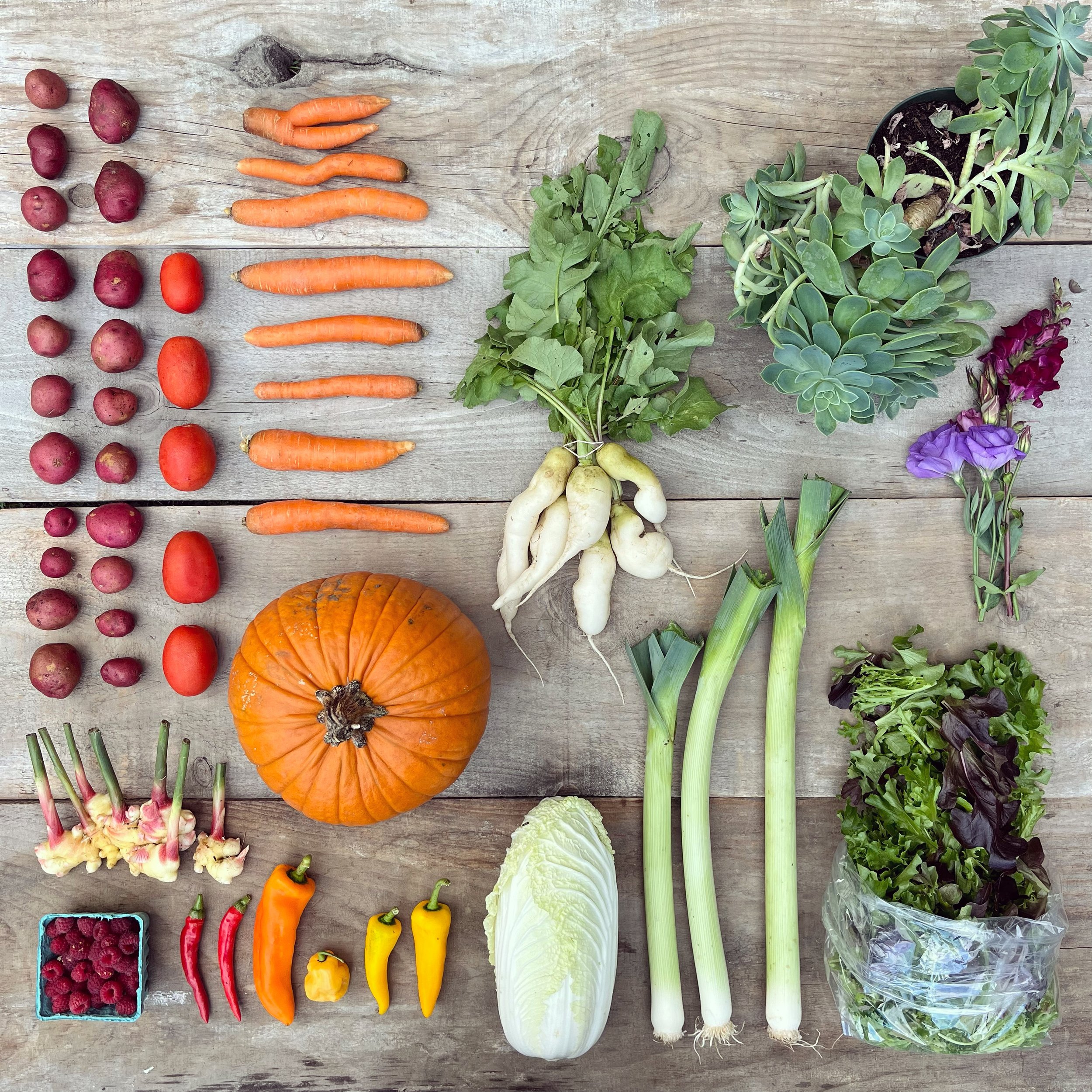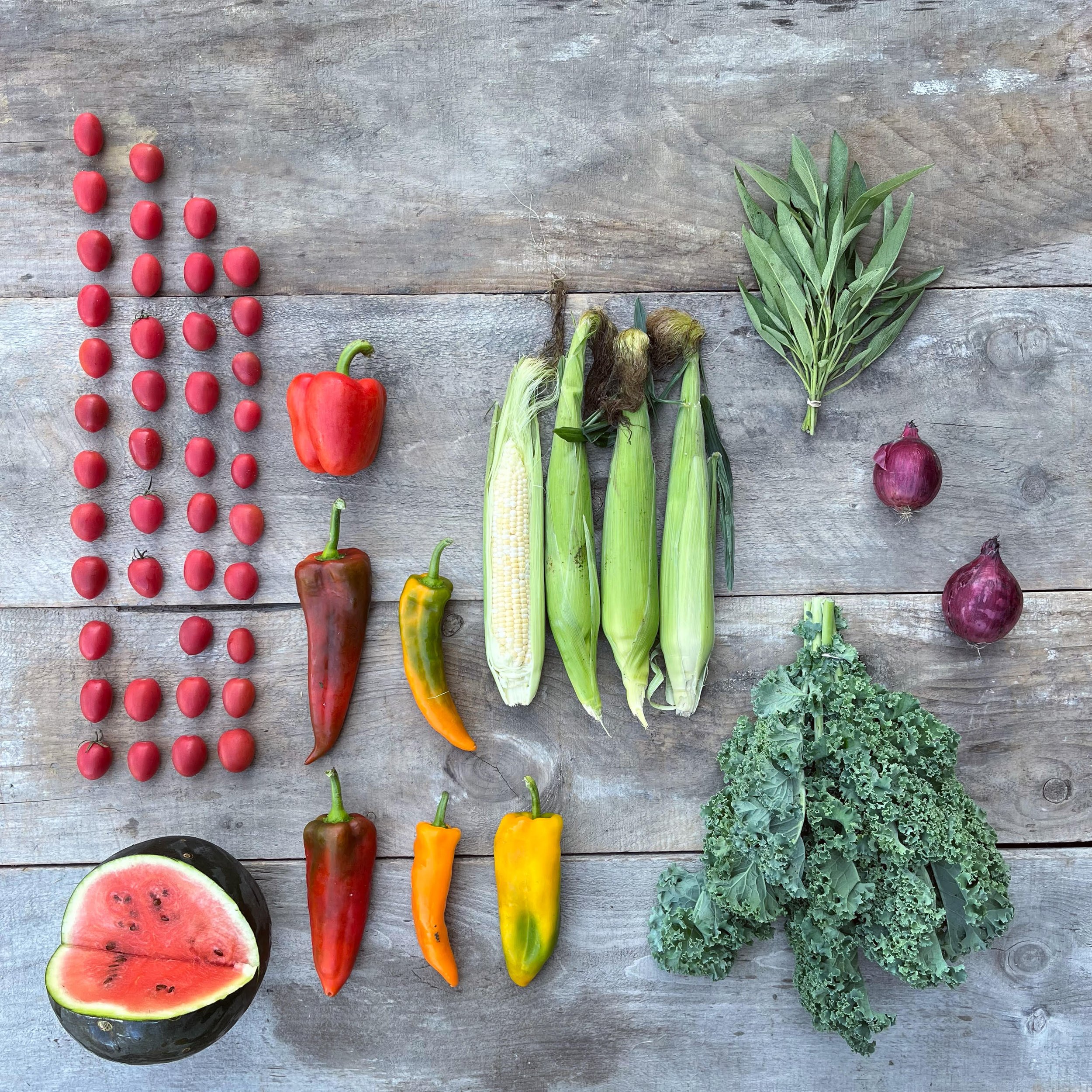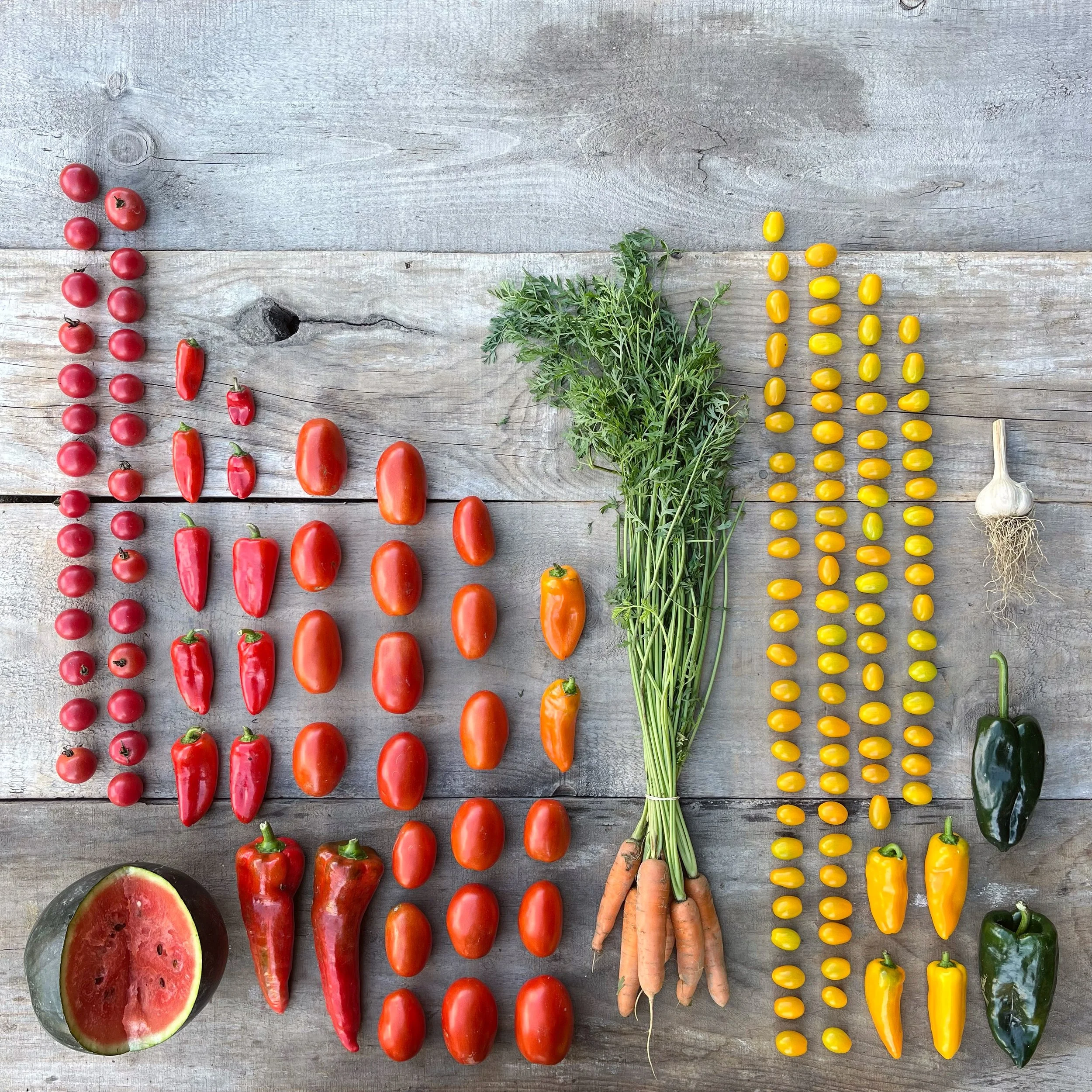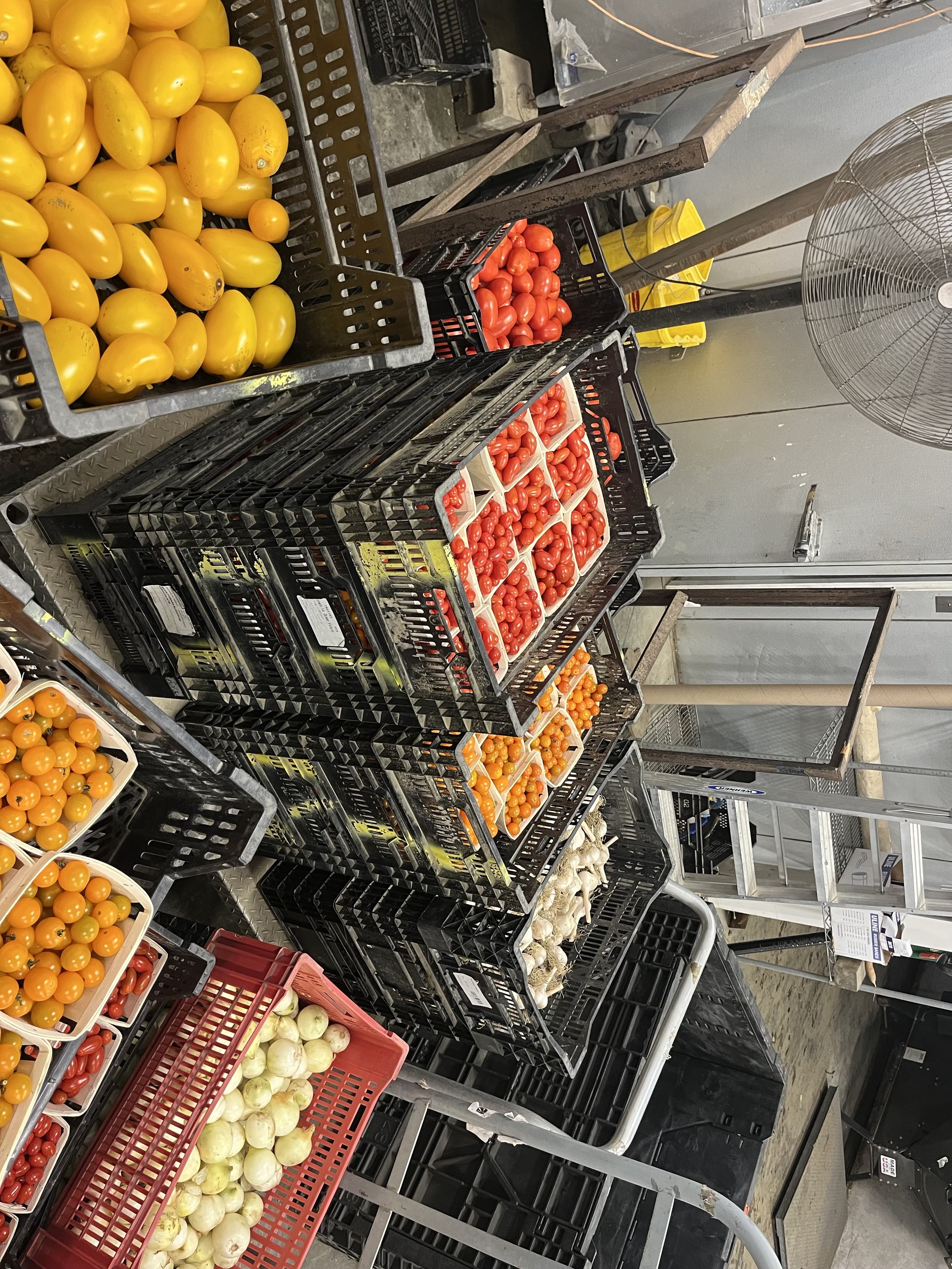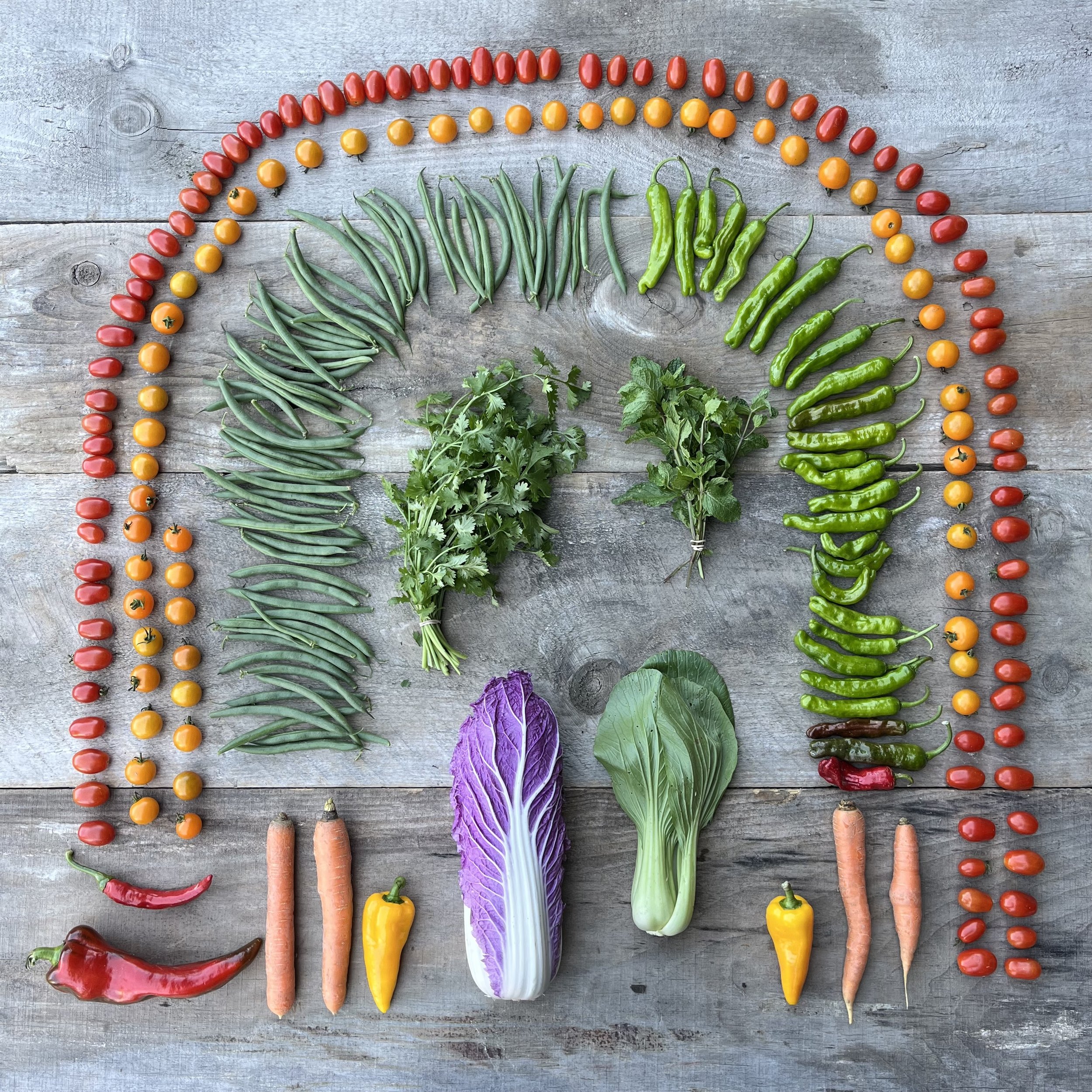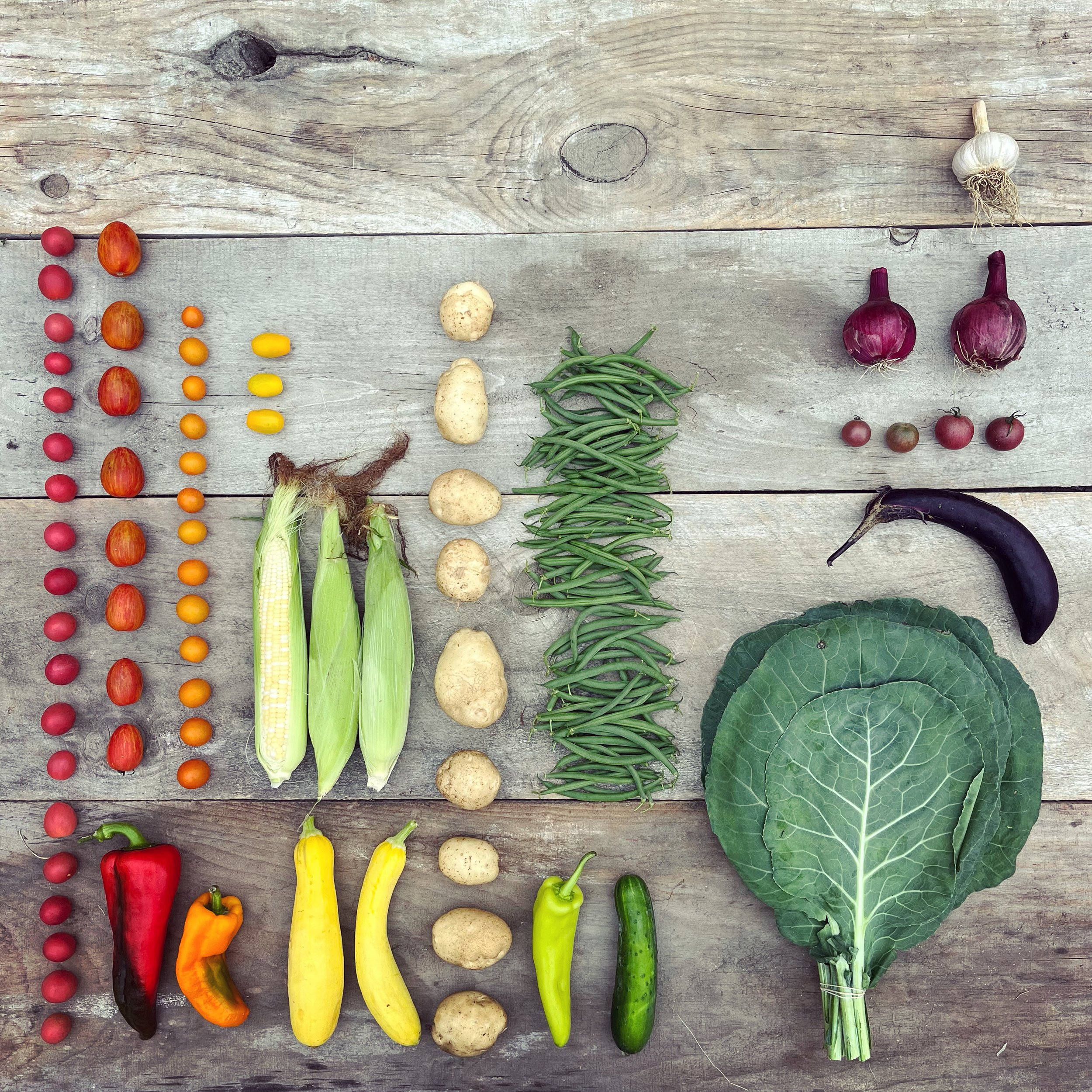P i c k l i s t
roma tomatoes - cilantro - corn - purple pepper - watermelon -
kale - Basil - cherry tomatoes - onion
This week has been a real mix of kicking butt and having butts kicked. With last week’s fleeting feeling that Summer was slipping away, and this week’s return to school, our family of four (two of which are full time farmers while the other two are full time farm adjacent) chose the more is more is more vibe, while ALSO working full time. OOPS. While we took in many sweet moments- paddling down the Connecticut, outdoor movie nights, lobster boils, etc, there was also the daily tasks that could not be delayed. For example: morning harvest, followed by deliveries, and afternoon weeding. We are officially running ourselves ragged over here, grown ups and kiddos alike. It all felt a little much come Saturday night at 6pm when the kiddos sat in the parked minivan, along the field’s edge listening to the moth radio hour, while Ray and I were picking corn. We promised them a dip in Kennedy pond post harvest only to then drive to Kennedy pond at 7:45 seeing that the sun had already dipped below the treeline. Double oops. But the kiddos can’t complain too badly. They had a pretty great Summer grazing their way through the days- berries from the fields, and cookies from the farmstand made for regular adventures AND they are currently on one last hurrah. A Sprague family tradition, started by the wise old farm sage GranPooh Sprague in which he would call in a “sick” one day during the season, declare it a private holiday and take little Ray and little Sarah off farm to magical places far and wide (but also within the twin states). Today, the next farming generation, now Big Ray and Big Sarah* have taken their littles on an adventure to get all the wilds out of them (storyland and lost river) before school starts. Not a bad tradition, only second to the tradition of pizza and ice cream cake for every single edgewater field crew birthday, of which there are aplenty.
As for school starting, deep breaths all around and please note the cherry tomatoes and the 3 tiny peppers making for excellent school lunch fodder.
And for those curious about how the week felt specifically in the fields, we are mostly harvesting and weeding now. We have weeded our strawberries for the 6th time, and hopefully the weeds will now slow. Daylight is reducing and we have made it successfully through millions of weeds so you gotta hope we have depleted a good portion of the seed bank. Our strawberry fields now look pretty good and continue to runner, so we can hope for a good crop next year. However we still will go through them once more with hoes before we cover them with straw and put them to bed.
Our Fall winter squash is beginning to ripen up. We spotted some spaghetti and acorn ready to go and a bit of butternut looks close behind it. Tons of cherry tomatoes and plums continue to ripen. Labor day is this weekend and that usually is peak abundance for melons and watermelons, and hot damn this fruit is delicious. And great news for September, our next corn planting is looking pretty stellar.
*For those CSA newbies of which there are a few of ya: Ray and Sarah are the kids of Anne and Pooh. They grew up at edgewater alongside their farming parents and are still at it. Ray manages field crops, and Sarah manages greenhouses.
FARMY FOODIE PRO-TIPS:
Ripe for the grill: corn - roma tomato - onion - peppers
MAYO-CILANTRO-SRIRACHA SMOTHERED CORN: The following recipe is a real heavy hitter in my house as we indulge in corn every single night. This stuff takes it to the next level.
Finely chop cilantro leaves
stir into MAYO
squirt in sriracha
Mix any utensil in sight
Pass on butter (gasp!) and spread this mayo upgrade on your cooked ear of corn and prepare to be delighted
Jenny’s Note: this recipe is particularly great eaten fresh
Ingredients Yield:About 2 cups
3 large ripe Roma tomatoes, chopped
¼ cup cilantro leaves and tender stems, finely chopped
¼ white onion, chopped
1 jalapeño, finely chopped
1 serrano chile, finely chopped
1 garlic clove, finely grated
1 tablespoon fresh lime juice, plus more as needed
1½ teaspoons kosher salt (such as Diamond Crystal)
Preparation: Gently toss tomatoes, cilantro, onion, jalapeño, serrano, garlic and 1 tablespoon lime juice in a small bowl; season with salt and more lime juice if necessary. Let sit, uncovered, to let flavors meld, about 10 minutes.
Jenny’s Note: this recipe is particularly great for canning and eating come winter
INGREDIENTS:
8 plum tomatoes (about 2 pounds)
cored 4 cloves garlic, unpeeled
2 serrano chiles, stemmed
1/2 medium onion, halved
1/4 cup packed cilantro leaves and tender stems
2 tablespoons fresh lime juice, plus more if needed Kosher salt
Directions: Heat a large cast-iron skillet over high heat. Add the tomatoes, garlic, chiles and onion and cook, turning occasionally, until charred on all sides, about 3 minutes for the garlic, 4 to 5 minutes for the chiles, 6 to 8 minutes for the onion and 8 to 10 minutes for the tomatoes. Transfer to a plate to cool.
When cool enough to handle, peel the garlic. Add the tomatoes, garlic, chiles, onion, cilantro, lime juice and 1 tablespoon salt to a blender and puree on low speed, stopping to scrape the sides and bottom to ensure an even texture, until the salsa is almost smooth but some small pieces remain.
Season with salt and more lime juice if needed. When blending hot liquid, first let it cool for five minutes or so, then transfer it to a blender, filling only halfway. Put the lid on, leaving one corner open. Cover the lid with a kitchen towel to catch splatters, and pulse until smooth.
But what about basil?!?! If you are not feeling a salsa week, sauce it up yall!












